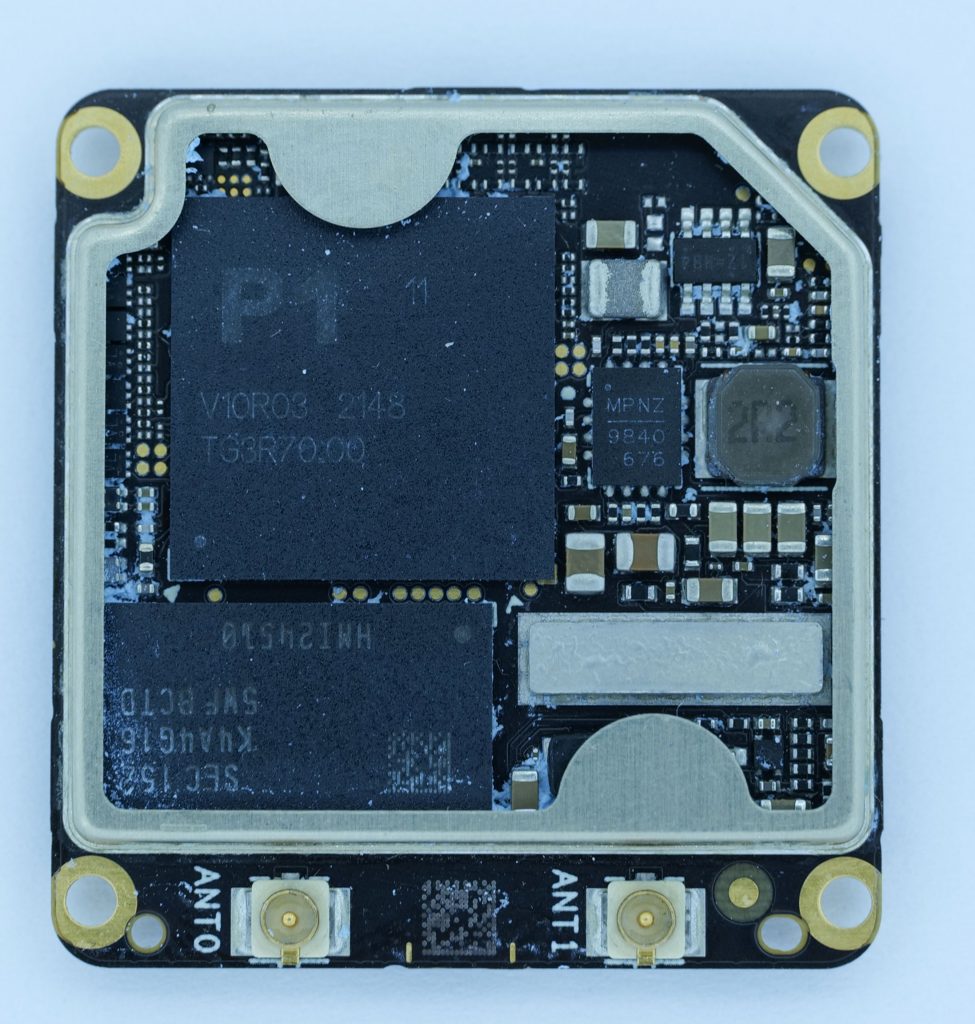
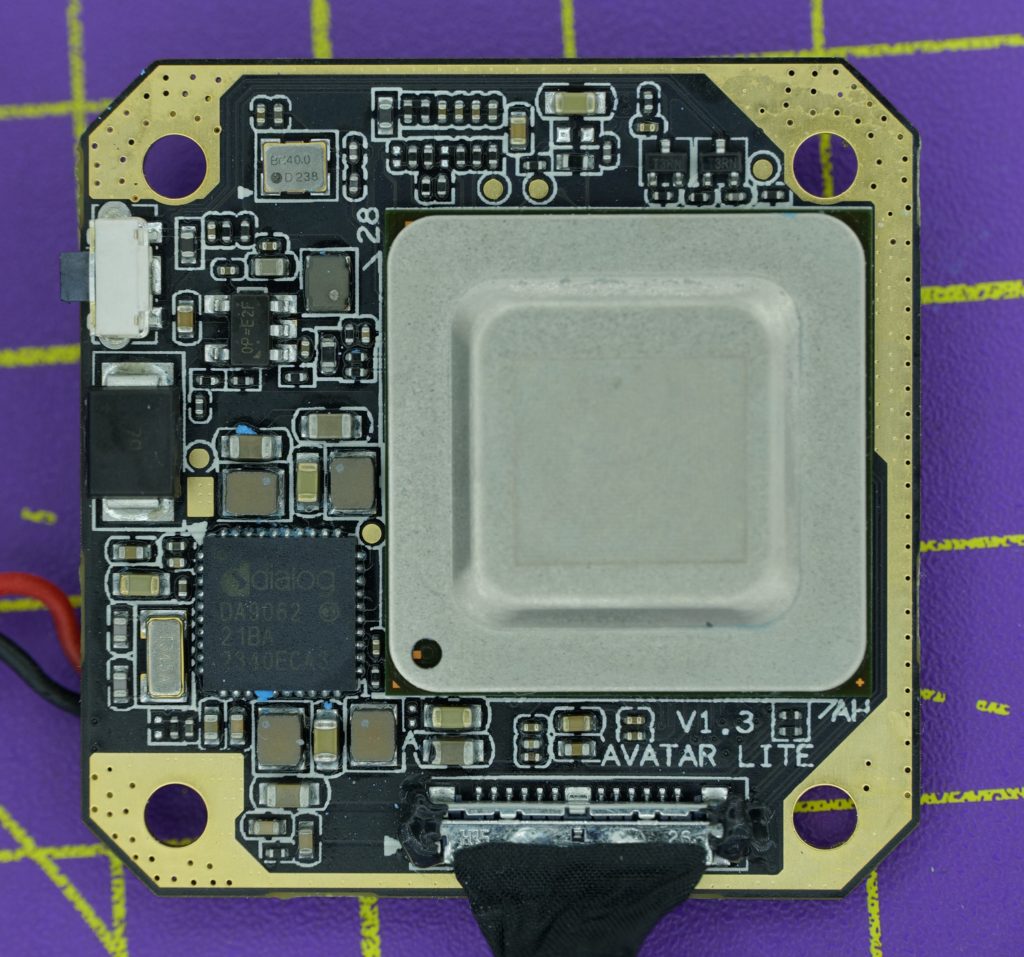

There has been a massive amount of conjecture and speculation over the origins of the recent digital FPV system from the likes of DJI and Caddx FPV as well as HDZero. With the release of the Avatar system there was also many that believed it was either using the same chipset as DJI or that is was a copy or clone. In this article i’m going to try and demystify this all and set the record straight on a few miss truths and rumours.
DJI Wireless FPV Lightbringe & Ocusync.
To begin we have to look at DJI first and the chipsets they have used over the years from Leadcore, Artosyn and others.
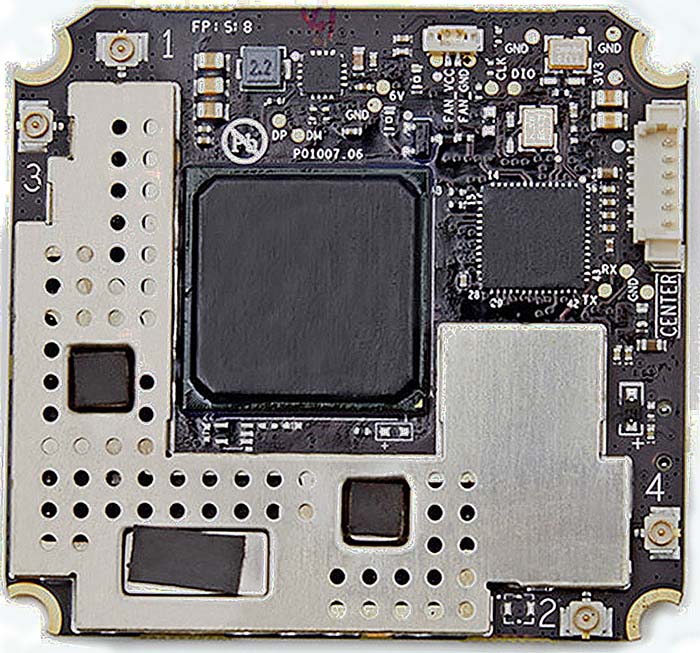
DJI’s early drones used Wifi for their wireless video link however with the release of the Inspire 1 DJI introduced Lightbridge. A new Wimax-based wireless system that replaced the basic WiFi-based systems they were using before and offered HD long range video and RC control link. This new system was originally driven by an Altera Cyclone V FPGA in the Inspire 1 and then later the Phantom 3 Advanced and Pro, In later production variants of these drone models and GL300/600 series remote such as the B, C variants DJI replaced the FPGA with a pair of SDR chips from a company called Artosyn.
Artosyn “Artosyn Shanghai Kuxin Microelectronics Co.Ltd”, known in China as Kuxin with the Artosyn brand is a Chinese fabless chip design house specialising on wireless video processing and AI chipsets. DJI replaced the FPGA in Lightbridge models with the Artosyn AR8001 DSP and AR8003 RF transceivers. These appear to be ASICS of the design DJI was originally delivering in FPGA.

A little later with the release of the Inspire 2, DJI started using the Leadcore LC1860 chipset alongside the Artosyn AR8001 with an Analog Devices transceiver. In the Phantom 4 Pro DJI again was using Lightbridge 2 however this time the Artosyn AR8001 was gone and replaced with a very similar-looking chipset but with a DJI logo on it. It’s believed this was still the AR8001 or at least a variant and shows DJI was starting to “dip their toes” with getting silicon with its own name or specific asics made.
DJI in its early days appear to have worked fairly closely with Artosyn on their wireless RF Designs.
As mentioned with the Inspire 2 and Phantom 4 Pro DJI transitioned from an Artosyn chipset to a Leadcore one. Leadcore like Artosyn was a fabless chipset design house but a much bigger player in the market, they were a subsidiary of Datang Telecom Technology Co Ltd who in themselves was a subsidiary of the partly Chinese state-owned “China Academy of Telecommunications Technology”.

Leadcore’s main business was the development of application processors and IP for mobile devices. In 2014 they were the sixth-largest supplier of smartphone SOC in China. Its LC1860 chipset was widely used in smart devices across China as it contained LTE DSP’s from Ceva for the RF front end. The overall goal of Leadcore seems to have been to create a home grown chinese equivalent to Qualcomm however Leadcore vanished around 2018 when its partly state owned parent company Datang Telecom Technology was having financial difficulties and faced being delisted from the Shanghai Stock Exchange. However while Leadcore as a company appear to have gone their chipsets are still used today in many drones from Autel and their IP lives on in other chipsets.
Back to DJI
When DJI released the Mavic Pro it came with a new wireless system called Ocusync.
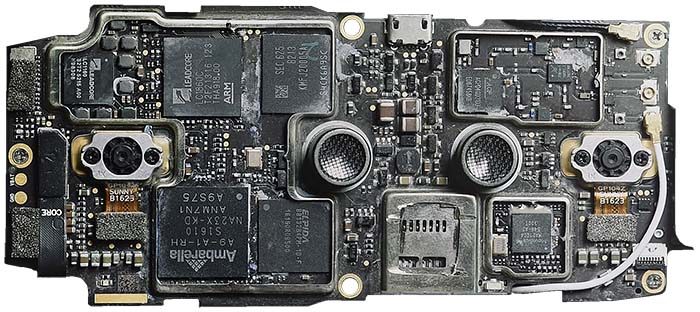
Overall very similar to Lightbrige but the big technical change in this was that it was said to be a true SDR. Whilst Lightbridge was also an SDR with the Artosyn chipsets it was Wimax based where as Leadcore was LTE based. In the Pavic Pro all the Artosyn chipsets were gone and DJI was using the Leadcore LC1860C coupled with the IE1000 front end transceiver from Imagination and this pairing took over the full job of the radio system and what we know as Ocusync V1.
At this point, it’s fair to summarize that DJI had been working on using the built-in SDR LTE modems and the ARM cores for driving the wireless system for some time on the Leadcore chipset alongside and felt it was now in a position to transition to that fully. DJI continued to use the LC1860C Leadcore chipsets as the SDR in all Ocusync and Ocusync 2 models from that point forward including in the Ocusync Air FPV system, the DJI FPV White Goggles and Goggles RE.
With the Release of the DJI Mavic 2 we also had Ocusync 2, this was the same hardware as Ocusync 1 on the Mavic Pro and more than anything code improvements over the original version and even offered some compatibility between remotes.
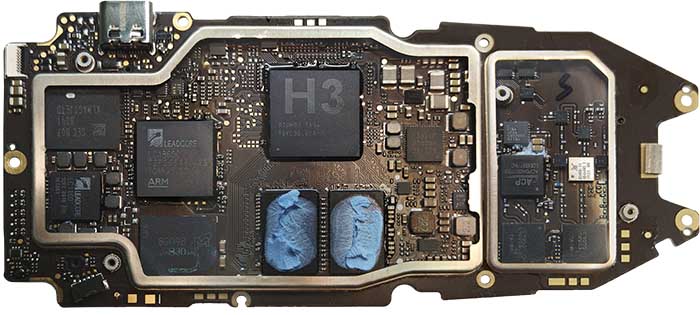
However quietly over the life span of the Mavic 2 DJI released a B verant remote with the enterprise edition that had a rather large hidden change inside, DJI replaced the Leadcore LC1860C with a new and at the time unknown chipset.

This new IC seen in FCC filings has a Leadcore logo among others but looked different to everything before, however later we now know it looks a lot like what was to come next.
The DJI Digital FPV System.
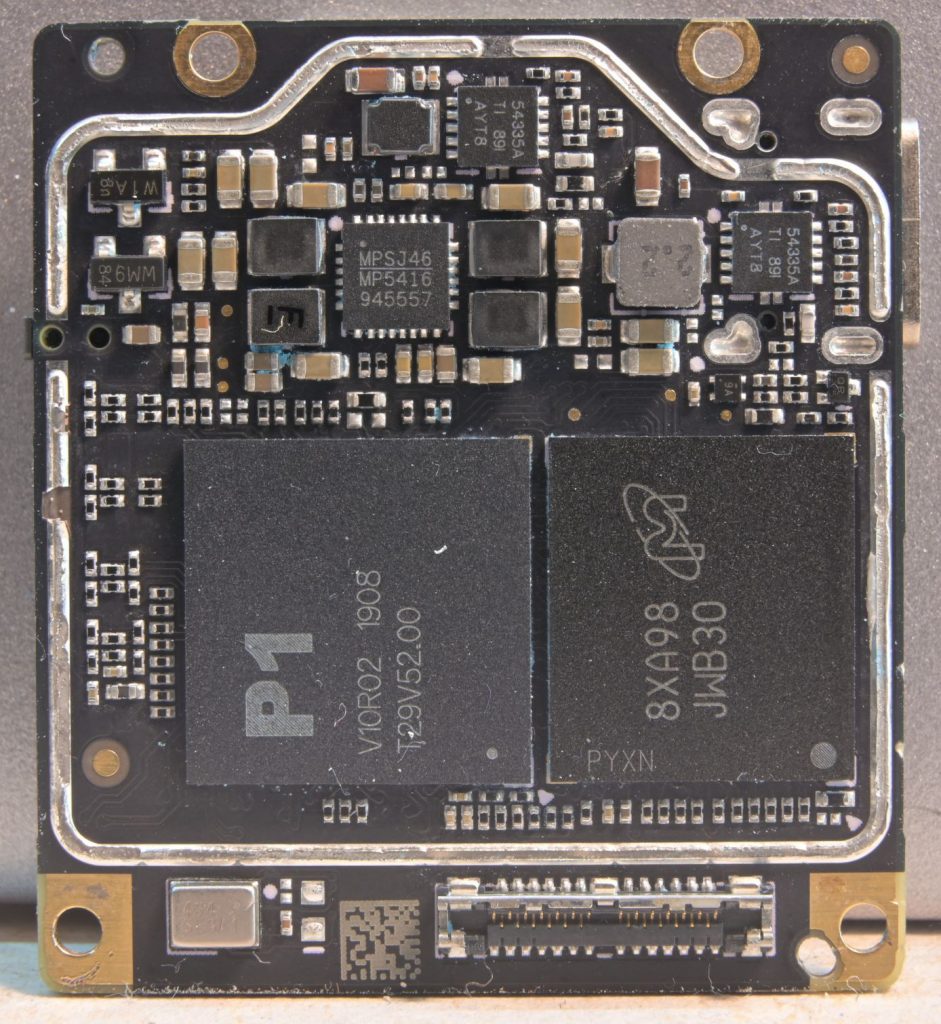
With the release of this DJI introduced the P1 chipset. This new SOC is believed to be a custom DJI ASIC that allowed them to develop a lower latency FPV system than we had seen before. DJI latency on the likes of Lightbridge & Ocusync 1 and 2 has been in the region of 100-200ms however this was dramatically lower being sub 30ms.
As time has gone on and with a massive amount of work from the likes of tmbinc, bri3d and joonas we now know that the P1 is really just a customized and dedicated Leadcore IP based chipset with tweaks to the LTE baseband.

This new chipset is more customized for a two way digital link with the parts of the LC1860C not needed for tablets and smartphones removed. There have also been deeper changes to the Ceva LTE baseband for DJI’s intended use case. Specification wise we know it still has two big Cortex-A7 cores, some small cores, Ceva DSP’s and a few other bits. They are basically using the same CPU core + DSP setup as the Leadcore LC1860C chipset and it’s likely running custom modem software and this is what’s making the difference compared to the off the shelf equivalent. On the P1 the first ARM A7 core runs Linux OS while the second runs the baseband RTOS in combination with dedicated DSPs.
Along side the P1 there is also a smaller S1 variant that DJI introduced that has less functionality such as fewer ARM cores and reduced bandwidth and is generally used in either their remotes or lower cost models.
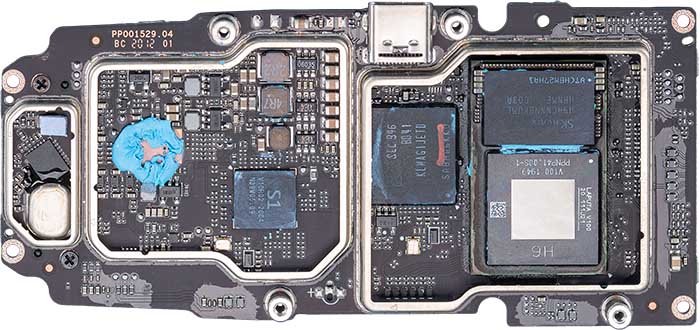
All subsequent drone models from DJI including the M200 V2, M300, Mavic Air 2, Air 2S, Mini 2, and Mavic 3 all use the P1 chipset with their remotes using either the P1 or its smaller brother the S1 and these chipsets have become DJI’s core technology for all their Ocusync based systems.
DJI O4
In 2023 DJI released drones with Ocusync 4 and a new variant of the chipset called the Sparrow 2 (S2). This is an upgraded S1 featuring increased bandwidth up to and beyond 80Mhz and more antenna lanes.
This is usually coupled to a second chipset for video processing such as the Eagle3T or H6 like in the DJI Mini 4, Avata and O3 Air Unit however has improved capabilities over both the S1 and P1.
The S2 is found in models Mini 4 Pro, Avata 2. DJI RC 2 and RCN2.
Technically S2 chipsets offer compatibility with the previous S1 and P1 however not all features will work such as the increased 60 and 80Mhz bandwidth modes.
Leadcore and Artosyn chipset do appear in other brands devices from the likes of Autel andothers , even the Herelink from Cube Pilot that uses the Xiaomi Pinecone S1 that was co-developed by Leadcore and Xiaomi.
More info on the DJI Ocusync Chipset Here
Walksnail Avatar HD – Artosyn AR9201/AR8211
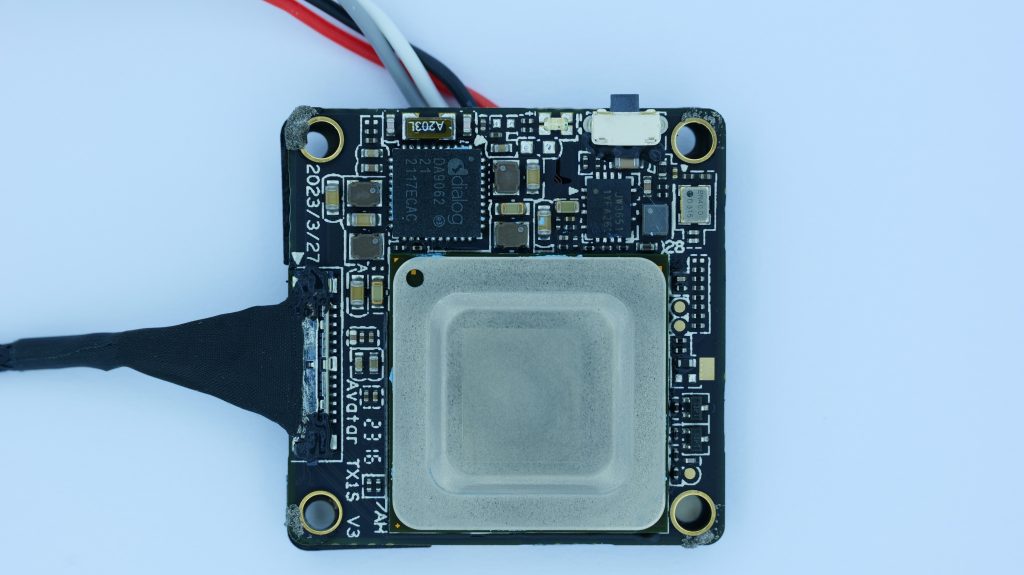
As I mentioned Artosyn make wireless video processing and AI chipsets and while they have worked closely with DJI in the past they have also developed their own line of chipset such as the AR series.
With the release of the Avatar HD FPV from CaddX/Wlaksnail there was a massive amount of speculation that it was using the DJI chipset however this was not the case. Early versions of this chipset were labeled as a Xilinx FPGA and later were just laser obfuscated investigation in the firmware showed it to be a Artosyn AR9201/AR8211.
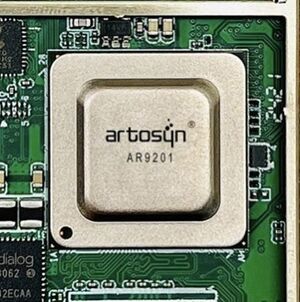
The Artosyn AR9201/AR8211 is a very similar chipset to the DJI P1, It features Arm cores and Ceva LTE ISP like the P1. and while this asic is similar to DJI’s it is believed to have been developed separately. While the DJI P1, S1 and the Artosyn AR series chipset do appear to share a lineage to designs from Leadcore such as the LC1860C they are not the same.
These Artosyn chipset are what you could call “off-the-shelf ” silicon however getting access to these is far more complicated than ordering from Mouser or Digichip. They are very much kept out of the public’s hands. It’s very interesting how these Artosyn chipsets have developed in recent years especially since Leadcore as a company seems to have publicly vanished, it’s very likely that there is Leadcore DNA and IP in there.
The Fall Of Leadcore
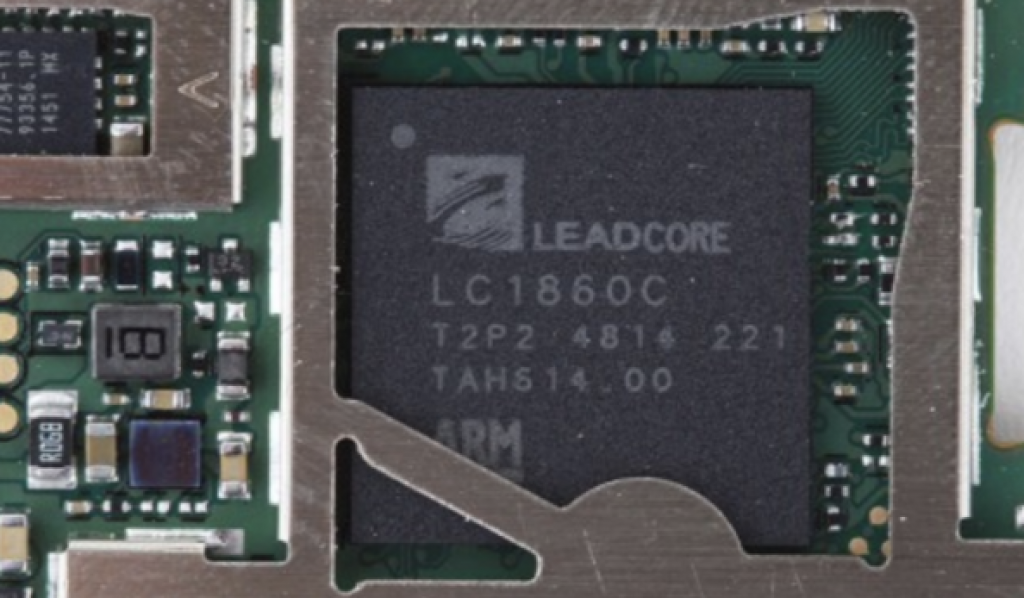
After the fall of Leadcore as a business the belief is their core designs and Intellectual Property was sold on or “distributed ” to selected parties in china. It very much appears DJI or Artosyn are of the parties that got access to Leadcores IP they may have worked together to design the P1 ,then Artosyn later released their own based on the same IP. Its with me stressing that while there is some heritage between the DJI and Artosyn chipsets they are not compatible with each others systems in any way.
The question of who actually did the work on the DJI P1 and S1 is not known but it’s likely with the clear relationship between all the companies there has been a few hands in it to develop low latency wireless systems that have helped DJI dominate the consumer and professional drone market. Today we see chipsets from Artosyn such as the older AR8020 that appear to offer a lot of what DJI has in the P1, and the newer AR8211 has more functionality with H265 and 4K30 capabilities.
While others such as Autel use Leadcore, Zero Robotics and Hollyhand use Artosyn chipsets all with similar functionally it is worth noting that DJI has been a step ahead of everyone else and while there is clear history and a relationship between DJI, Artosyn and Leadcore that seems to have given DJI the edge over everyone else.
The Chinese Smartphone Chip Dream
From a high level on these chipsets you can look at this as follows, the Chinese state government tasked parts of its wireless industry to create rival chipsets to the likes of Qualcomm for the domestic chinese smartphone market. They signed agreements with companies such as Ceva to get access to core LTE IP and while these have been mostly unsuccessful in gaining traction in the smartphone market due to poor performance this has allowed chinese manufacturers such as DJI to gain much deeper access to the LTE baseband modems used than we have seen in the US and EU and this has allowed them to develop the wireless digital video systems we see today.
China has not given up on their dream of competing with the like of Samsung and Qualcomm and in 2023 the release of the Mate60 Pro brought the Huawei Kirin 9000S. Designed by HiSilicon a Huawei subsidiary it is believed to be 5G capable smartphone chipset delivering performance much closer to that of the competition and is manufactured using a 7 nanometer process by SMIC.
Did DJI Upset The US government?
A final and interesting point on DJI on this subject is around the rumours that were circling for some time that the release of the DJI FPV system coincides with the US commerce ban and there was talk that DJI was using a US-based chipset and the US GOV was not happy with what they had done and banned them. We now know that is largely incorrect however I will add that we have not seen anything like what DJI has done with the LTE baseband modems in the West and while it may not be a US chipset the original LTE core IP origins have links to Qualcomm and/or Ceva and it’s not at all beyond belief that what they have done rattled some cages in the US and EU where this kind of “tinkering” is largely reserved for the military.
Divimath – HDZero

HDZero is a digital FPV system manufactured and sold by DIvimath Inc.
Divimath is a US registered company with manufacturing and software development based out of China and is owned by Carl Zhou.
Divimaths first product Byte Front appeared on the market in mid 2019 under a partnership with Fat Shark. This was a digital FPV system that used an AnalogHD camera and offered low latency digital FPV. Designed specifically as an analog replacement if offered low, fixed latency wireless video streaming and is a single way link like Analog.
Later the system rebranded into first Shark Byte then HDZero, both systems being the same based on the same DM5680 chipset however now using digital MiPi cameras from Runcam.

The video transmission technology used by Divimath in these systems is based on Joint Source Channel Coding. This same technology was also used by the now defunct Amimon in the Connect Prosight HD. Initially believed to be designed for wireless VR headsets, it started to appear in digital FPV systems as a direct competitor to DJI in 2019.
Since its release the ByteFrost/Sharkbyte/HDzero system has been based on either the Divimath DM5680 or DM5680T Asic, designed in-house by Divimath.
Joint Source Channel Coding
JSCC is very different to traditional compressed wireless digital systems like DJI and Artosyn. It offers near-zero fixed latency by transmitting uncompressed video up to 1080P30. It behaves more like an analog in that it is a one way “stream” of video with the receiver only ever receiving and not transmitting error correction data back. It also behaves a lot more like analog in low signal as a result.
The Divimath chipset is coupled to either AD9364 in Byte Frost or later the DM6300 RF transceiver in HDZero.
Analog Devices Divimath DM5680 Brochure
Thanks & Credit
Joonas Twitter https://twitter.com/fpv_wtf?s=20&t=q9...
Some Images credit DJI Firmware Tools Wiki – https://github.com/o-gs/dji-firmware-tools/wiki
#DJI FPV #FPV #HDZero #HDZero VRX